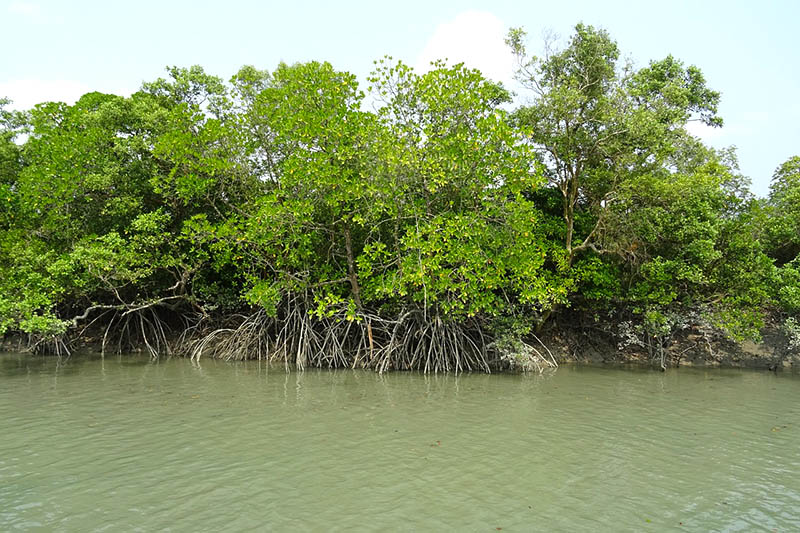In a strong stride towards sustainable aquaculture, Silvofishery ponds can be an eco-friendly haven for shrimp farming, integrating seamlessly with natural ecosystems. These ponds are strategically positioned either within mangrove forests or as separate systems enclosed by dikes, emphasizing sustainability and environmental harmony.
The Silvofishery ponds, spanning from 250 to 800 square meters, or narrow channels of 3-4 meters, serve as nurturing grounds for shrimps until they reach harvest size. The unique aspect lies in the design and location of these ponds, contributing to the preservation of mangrove ecosystems and sustainable shrimp farming practices.
One distinctive model is the Mixed Silvofishery system, where dikes are adorned with mangroves, closely mirroring the natural habitat of the surrounding mangrove forest. This innovative approach not only aids in the conservation of the mangroves but also creates a symbiotic relationship between the aquatic life and the mangrove ecosystem.
In the Mixed Silvofishery system, the dikes serve as a protective barrier, covered with thriving mangroves that act as a natural filtration system for the ponds. This design promotes the health of the shrimp by replicating the conditions of their natural habitat while also providing an eco-friendly and sustainable environment for farming.
On the other hand, the Separate Silvofishery system places the ponds along natural waterways in the front area of the farm, with a distinct area in the rear dedicated to mangrove cultivation. This separation allows for efficient management of both the shrimp farming and mangrove conservation aspects of the operation.
The natural ponds in Silvofishery systems are characterized by their flat terrain and a water depth ranging from 30 cm to 1 meter. To maintain water quality and simulate tidal movements, the ponds are regularly flooded through one or several locks connected to channels. This controlled flooding ensures optimal conditions for shrimp growth and replicates the natural exchange of water found in their native habitats.
To fortify these ecosystems, modern lock installations, in addition to traditional on-site soil dams and wooden sluice gates, are incorporated. These innovations enhance the efficiency of water management and contribute to the overall sustainability of Silvofishery practices.

The benefits of Silvofishery extend beyond efficient shrimp farming. The integration of mangroves into these systems plays a crucial role in carbon sequestration, shoreline stabilization, and providing a habitat for diverse marine life. This holistic approach demonstrates that aquaculture and environmental conservation can coexist, offering a template for sustainable practices in the ever-evolving world of agriculture.
As part of the FISHBYTE’s commitment to a sustainable approach for shrimp farming and the conservation of mangrove forests, the Silvofishery project is set to launch in this shrimp season of Bangladesh. This initiative aims to demonstrate the benefits of Silvofishery among smallholder farmers in Burigoalini, Shyamnagar of the Satkhira district in the Khulna Division. Given that shrimp rearing is the primary source of income in this southern coastal region of Bangladesh, renowned for the Sundarbans, the world’s largest mangrove forest, and Black Tiger shrimp farming, this project holds significant promise.
As the global demand for seafood continues to escalate, initiatives like Silvofishery in Bangladesh will lead the way in promoting a responsible and environmentally conscious approach to aquaculture. By seamlessly combining traditional practices with modern innovations, these systems not only meet the growing demand for seafood but also contribute to the preservation of vital coastal ecosystems. We firmly believe, our project of “FISHBYTE Silvofishery” will be a beacon of sustainable aquaculture in Bangladesh’s falling shrimp sector and demonstrating the co-existence of commercial farming along with conservation of natural ecosystem.
